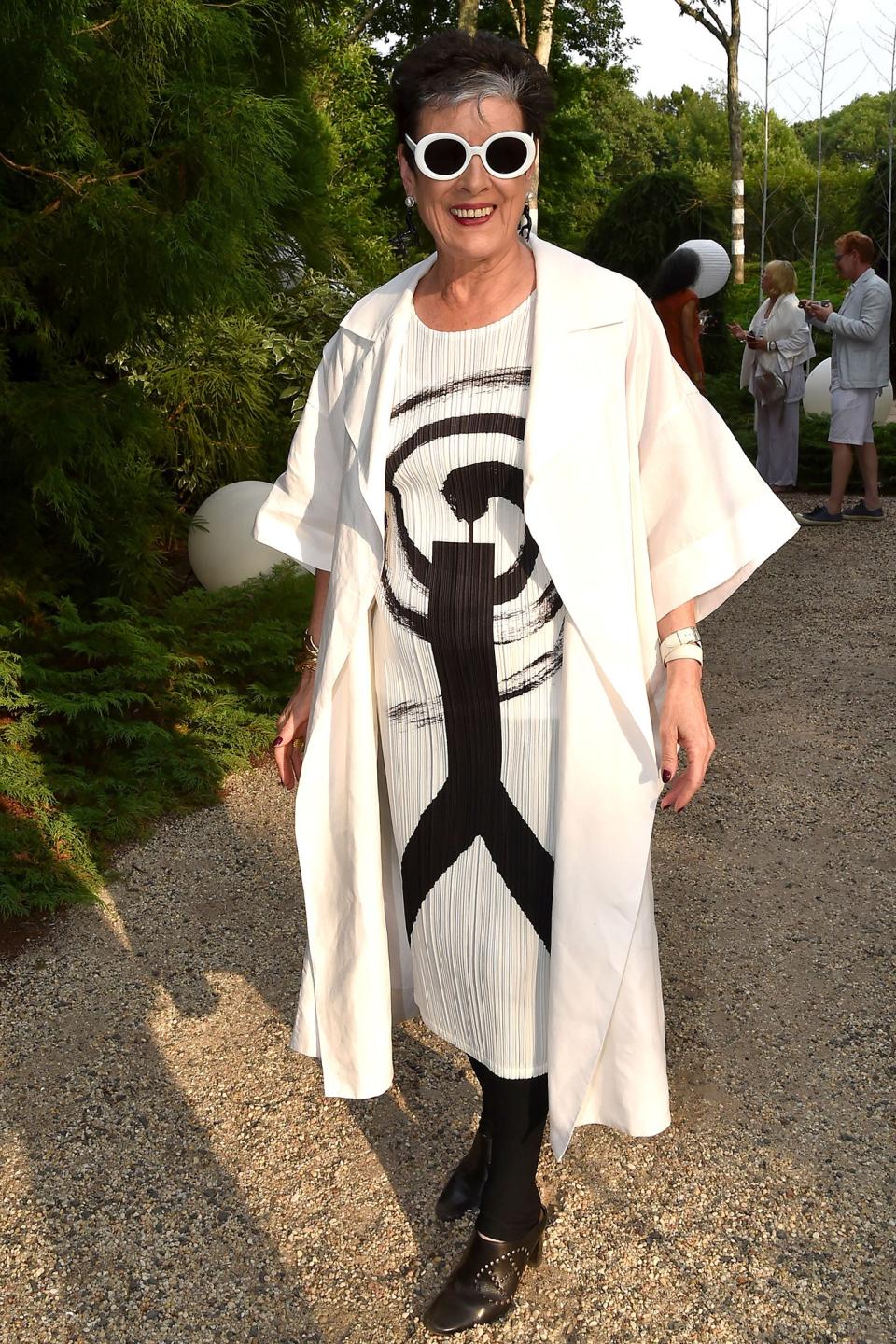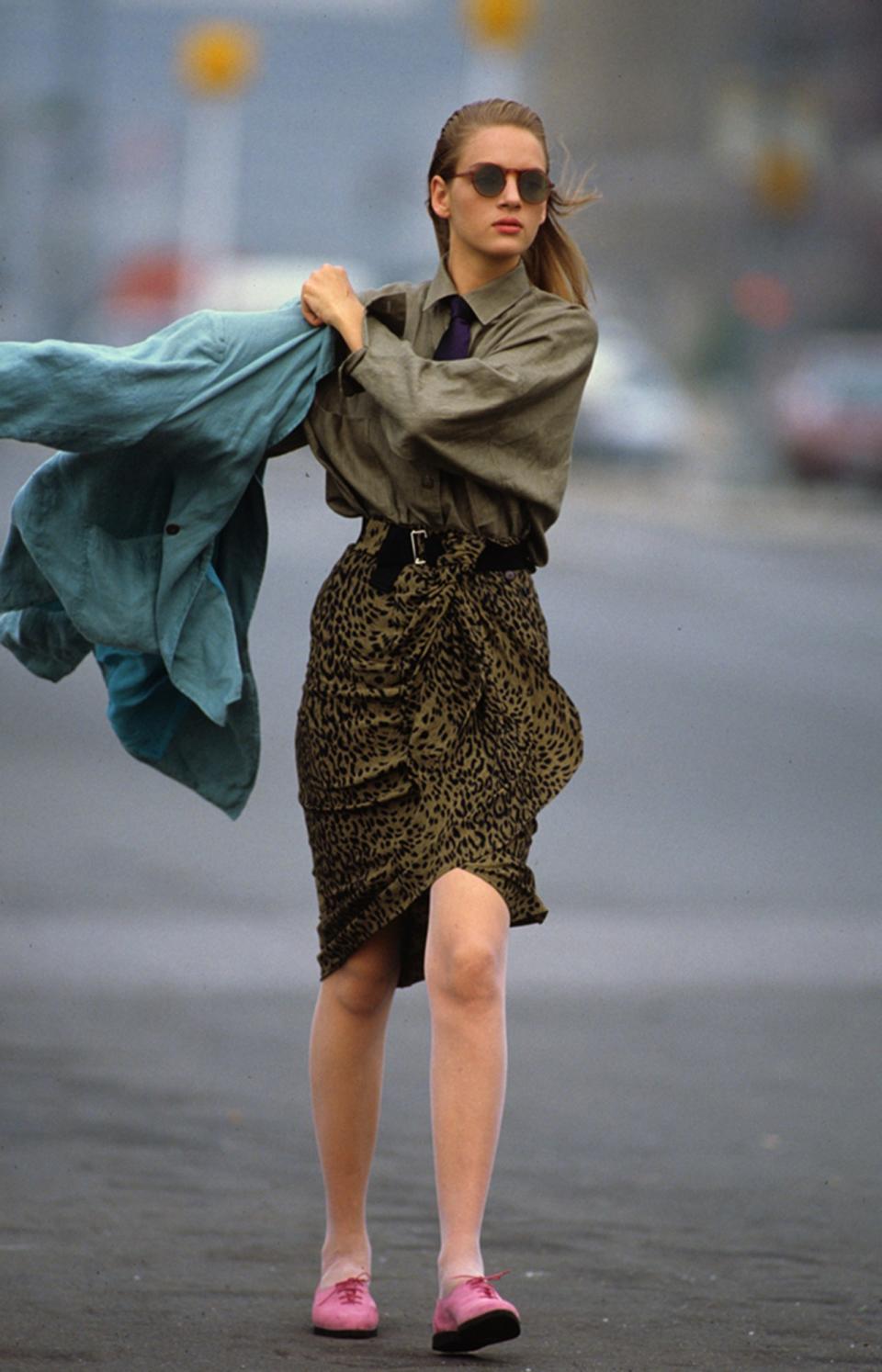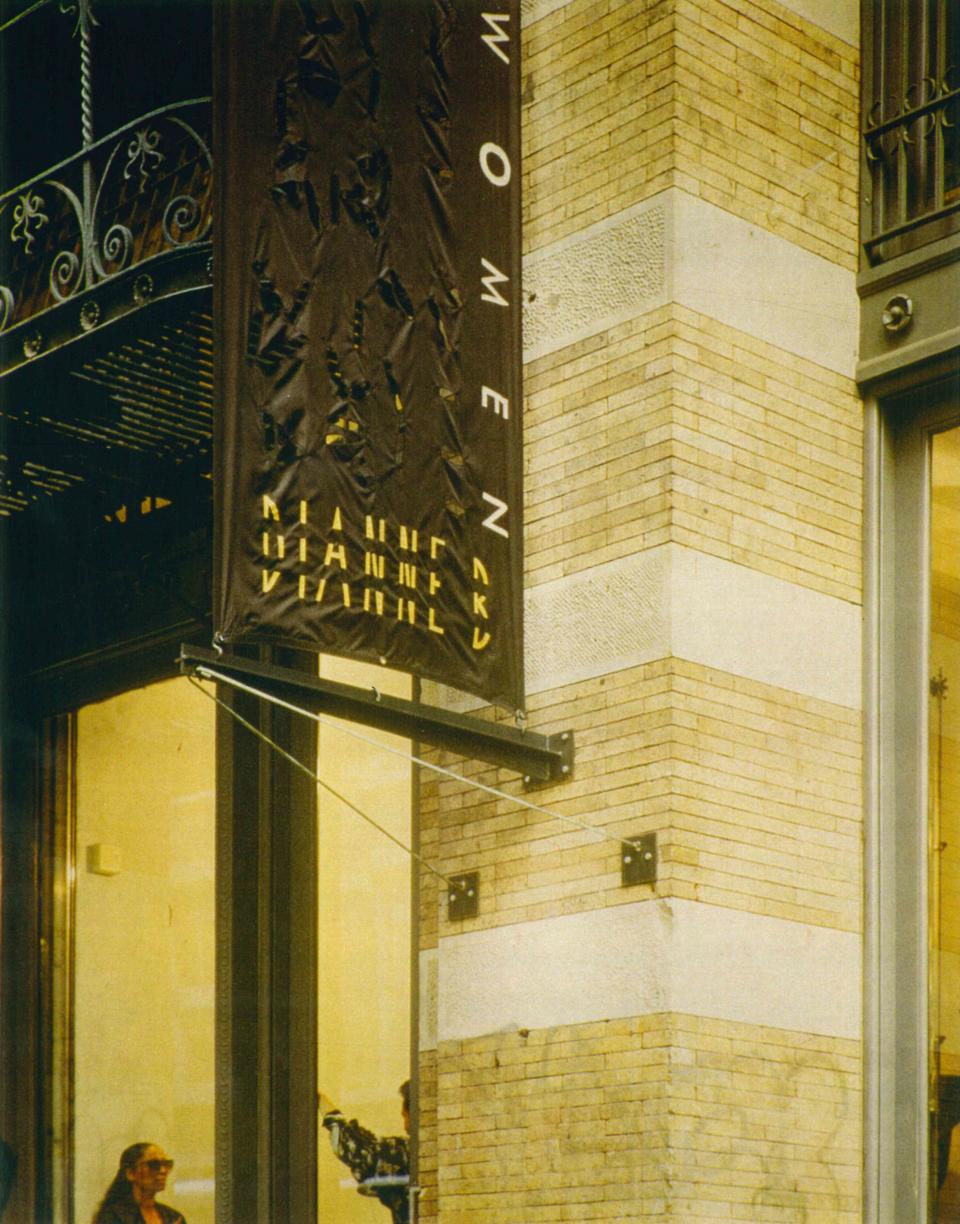Dianne Benson, a Maverick Retailer in 1980s New York, Talks Fashion, Art, and Collaborators Like David Wojnarowicz and Cindy Sherman

Dianne Benson
Dianne Benson, a maverick 1980s retailer, can take some credit for establishing Soho as a fashion destination. Mad for avant-garde designs—she once said that Comme des Garçons’s creations would “never go out of style because they never were in style”—Benson opened her first store uptown in 1976 (which would eventually boast an “Azzedine on the Mezzanine” department) with the support of her then-husband, Irving. Building on its success, in 1982 she opened a second outpost, on West Broadway. It was, she told Vogue at the time, a boutique that “appeals to the artist in everyone!”
A year later, partnering with Ralph Davies Lewis, she opened the first freestanding Comme des Garçons boutique in America. Designed by Rei Kawakubo, it was located in an old Con Ed building Benson discovered on the same block as the Leo Castelli and Mary Boone galleries. All of this occurred long before the neighborhood was home to an Apple store and myriad luxury flagships; back then Soho’s cobblestone streets were flanked by galleries that attracted a like-minded community of creatives, many of whom were drawn to Dianne B.’s stores, which, noted The New York Times in 1986, were “bursting with fashion for select tastes. Gaultier, Miyake, and Kenzo mingle. So do some of the city’s best- and wildest-dressed shoppers.”
Benson corralled local talent to create promotional materials for her stores. Cindy Sherman’s now famous 1983 fashion series originated as an advertising assignment for Benson, who had a long-standing collaboration with Peter Hujar, examples of which were recently exhibited at the Morgan Library. David Wojnarowicz, the subject of an exhibition opening this week at the Whitney Museum of American Art, was another art star who came into Benson’s orbit. At the time, says Benson, who is now a gardening expert and president of the board of LongHouse Reserve, such collaborations came together naturally. “There weren’t hard and fast rules and galleries and representatives and three assistants and five stylists; it was a very interactive time,” she says.
As fashion, and the art world, rediscover the 1980s, we asked Benson, who can say, loud and proud, “I was there,” to share her impressions of those heady times.

What were the 1980s really like, fashionwise?
It was a great time, and it was a completely different time; I mean fashion was fashion. There was no Zara, there was no Internet, there was no alternative, so it was fresher. There were extremely strong individual designers who had their own form and their own forum. There was less of everything and it was more distinguishable, so I think it was easier for people who liked the same things or who had the same sort of attitude to find each other and connect.
In the late 1970s and the early ’80s in the front row of all the shows there was Joyce from Hong Kong, Browns from London, me and Charivari, and Tommy Perse from L.A. It was a very small group of people who were really supportive of the labels and the houses and the people that we loved. And we all loved the same people—we all loved Issey Miyake and the whole Japanese [movement], and Jean Paul Gaultier and Jean-Charles de Castelbajac. It was sort of like a club. I can’t emphasize enough how different [the industry] was. And how individual each designer was. You could tell a mile away if something were a Gaultier or a Miyake; you never got confused. And the runways were filled with all these fantastic people from all over the world. [People talk about] art and fashion, even diversity, being something new; nothing could be more diverse than it was then. There was a wonderful jumble of models and people. Everything didn’t have a market brand attached to it—it was real. Not all the stores were as edgy and artsy as mine were, but at the time it was natural for me to work with Peter Hujar and Robert Mapplethorpe and Cindy Sherman, and connect them with Gaultier and Dorothée Bis and Issey: It was all just one like-minded time.

Commissioned by Dianne Benson.
Chromogenic color print, 74 1/2 x 45 3/4 inches
How did you get started in the industry?
I was a buyer at a nice store in Maryland called Hutzler’s, which doesn’t exist anymore but was sort of the Bergdorf Goodman of Baltimore. It was a wonderful, family-owned place. That was my first job. I became the assistant buyer in the dress department, which was [stocked with] Norman Norell and James Galanos and all those people—and Woodstock was happening! I went to them and said, “If you don’t wear Norman Norell or Villager [a collegiate-style label], there’s nothing here to buy.” So I got to open this department for young people called Point of View, and they sent me to New York for eight weeks. It was the highlight of my life at that point.
One of the first places I went was Henri Bendel, to buy Stephen Burrows, and I met the staff there. I guess I was very enthusiastic, and eventually they asked me to come and work in New York, so that’s how I got in the middle of everything good at the right time. I was lucky; when I came here in 1970 to work at Henri Bendel, it was the edgiest store by far in New York, and I was the youngest buyer. I went to Paris on the arm of [legendary retailer] Geraldine Stutz, and I was right in the middle of the action. I met Karl Lagerfeld when he was at Chloé; I mean it was a long time ago! I’m so happy I was around at that time instead of this one, I can’t tell you.
What happened next?
I left Henri Bendel and opened my own store because I wanted things that were even a little too edgy for them. I was already into the Asian influence and all sort of, I don’t know, those simple, earthy kind of clothes. I had this fantastic opportunity at a fantastic time, that was in 1976, and I got a lot of attention. I made my own collection, too, and my husband at that time was in the business. Everything just sort of worked.

What were you wearing at the time?
I was wearing what I sold: De Castelbajac and Dorothée Bis and Miyake. I was a total Issey fan, a devotee. And Gaultier was so great then; [he started] just when my store was new and when everything was very hopeful—nothing bad had happened. New York City was supposedly filled with crime, but nobody ever seemed to be afraid of anything, and there was no AIDS yet. It was just this sort of blissful time when everything seemed possible. The same person who designed my store, Ron Dowd, designed Studio 54. Everybody knew everybody, and you didn’t have to make arrangements with Cindy Sherman or Robert Mapplethorpe or someone like that to do something together; you just met and you decided and you just did it.

How did you first establish contact with the artists you worked with?
I had a great assistant named Paul Sinclaire; he came to work for my store when it opened and he was a very alive, charming gay guy totally immersed in the art scene. He would say, “This is where we have to go, this is who you have to meet,” so I think he probably introduced me to Peter Hujar, and I worked with him for years, probably from about 1978 to about 1985. I met David Wojnarowicz through Peter. I loved Peter’s work and I loved him so much—our lives were intertwined. One time he and David made a summer catalog for my stores; David did these drawings of people on the beach over Peter’s pictures. It was just fantastic and the kind of thing that could probably never happen again. To see Peter and David being so recognized now is really great.
How exactly did you work together?
I would say, “Oh, wouldn’t you like to take a picture for me? These are the clothes for this season, or this is the thing.” And then they would take the picture however they wanted, on whomever they wanted. Sometimes they would say, “Let’s take it on you,” or I would say, “Let’s take it on me,” or they would have other ideas.
With Cindy, who lived downtown at the time, I said, “Come in the store, take whatever clothes you want, take whatever pictures you want.” I don’t think we looked at contact sheets together, I think she picked. They ran in Interview [as ads for the store]. A lot of people didn’t get it. This was her third big series and it was the first time she began to make her own kind of social commentary and mockery of things; they’re not irreverent but they are very tongue-in-cheek. She used those pictures when she had her next show at Metro Pictures. I think I paid the artists $500; Cindy didn’t take the money, I think we bartered—she would come in and buy clothes. She was a good customer.

Commissioned by Dianne Benson.
Chromogenic color print, 67 x 45 inches
What was Soho like in the 1980s?
I opened Dianne B. on Madison Avenue in 1976, and the Soho store opened in 1982. There was nothing in Soho then, just a few vintage shops. The galleries were there and the artists were there, but there was nothing else, no fashion, no nothing. Paul and I did that store together. The week we opened, Art Forum had on the cover this gorgeous bamboo cage bustier from Issey Miyake, and I had it in the window of the store, so it was like this immediate marriage of art and fashion.

You were also involved with Comme des Garçons?
In 1983 I opened the first Comme des Garçons store in America. The honest truth is that I wanted to open an Issey Miyake store because I had this customer who I sort of cultivated, [even though] at the beginning I took a lot of markdowns because the clothes were really radically different.
I was very used to going to Japan, and I was up on everything that was happening there with Yohji [Yamamoto] and Rei and Kansai [Yamamoto]. The Issey people were not being at all cooperative at the time. My second favorite was Comme, so after a rigorous six months or so of negotiations with Rei, we made a deal. The Dianne B. store was at 426 West Broadway, and Comme des Garçons was at 116 Wooster Street. At the time, things were still possible. It was big, huge: A 4,500-square-foot store of poured concrete [at street level]. Rei designed the store, and nobody had ever seen anything like it; it was the first thing of its kind. It was like [a stop on] a pilgrimage; I mean everybody from all over came and was just dumbfounded. It was this huge store with one rack of clothes and a gorgeous long black table and an Eileen Gray set of chairs downstairs.
And what was happening with your own business?
In 1986 I opened a bigger Dianne B. store with men’s in it and everything. Ed Mills designed it, and it was postmodern when postmodernism was really the big thing. I should never have done it, because things were fine the way they were. That’s when everything was changing, [the beginning of] the power-suit days. Reality set in and everybody got on the bandwagon: Bloomingdale’s, Barneys New York, Saks Fifth Avenue, Bergdorf’s—everybody wanted to have all the same designers. They’d say, “If you won’t sell to them, we’ll give you a $100,000 order”—whatever the numbers were. It became almost impossible to compete. The final blow was when Issey told me I couldn’t buy his clothes anymore because he was opening his own store; that was 40 percent of my business by the late ’80s. By then I was actually sick of fashion shows; you know you get tired of it after a while, especially when it gets harder. And it got to be so much about money, and it wasn’t about money [for me]; somehow the stores just worked, the clothes sold, I paid my people, we could do what we wanted. Then all of a sudden everything was about money and big-shouldered suits; the world changed.



